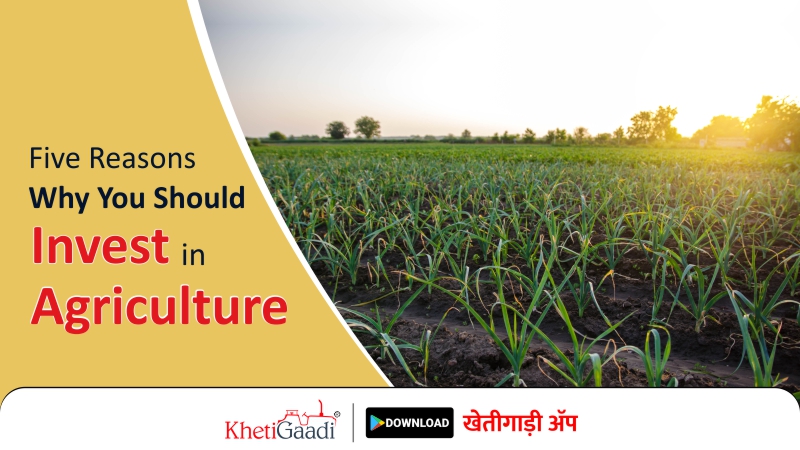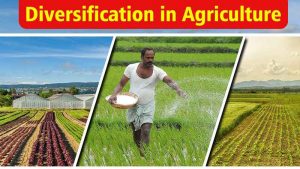Let’s discuss the 5 reasons why you should invest in agriculture.
Growing Demand for Food:
The global population is expected to reach 9.7 billion by 2050, which means there will be an increasing demand for food. Investing in agriculture can provide you with opportunities to take advantage of this growing demand and potentially generate significant profits.
The growing demand for food is driven by several factors, including population growth, urbanization, and changing dietary habits. As the global population continues to increase, so does the need for food to feed people. At the same time, urbanization is leading to the development of more cities and the displacement of agricultural land, which can lead to food shortages.
Additionally, as people become more affluent and urbanized, they often shift to a more meat-based diet, which requires more resources to produce. This increased demand for meat puts pressure on agricultural resources, such as land, water, and feed.
Climate change is also a significant factor affecting food demand, as it can alter weather patterns and reduce crop yields.
To meet the growing demand for food, there is a need for sustainable and efficient agricultural practices, as well as a focus on reducing food waste and improving distribution systems. It is also important to promote healthier and more sustainable dietary choices to help reduce the pressure on agricultural resources.
Diversification:
Investing in agriculture can provide diversification to your investment portfolio, as it is not subject to the same market fluctuations as other investments such as stocks and bonds. Agriculture is often considered a stable and predictable investment option that can help you weather market volatility.
Agricultural diversification refers to the practice of cultivating a wide range of crops, raising different types of livestock, or adopting various agricultural practices within a single farm or region. This approach is aimed at reducing the risk of crop failure or livestock losses due to disease or adverse weather conditions, as well as promoting sustainable land use practices and improving soil health.
Agricultural diversification can take many forms, such as crop rotation, intercropping, agroforestry, mixed farming, and the integration of livestock and crop production. By growing a variety of crops and utilizing a range of farming practices, farmers can increase their resilience to environmental and economic shocks, while also enhancing the nutritional quality and diversity of their products.
Additionally, agricultural diversification can have environmental benefits, such as reducing soil erosion and improving water and nutrient retention. It can also provide economic benefits by creating new markets for farmers and promoting local food systems. Overall, agricultural diversification can play a crucial role in building sustainable and resilient food systems for the future.
Environmental and Social Benefits:
Agriculture can provide many environmental and social benefits, including:
Soil health: Sustainable agricultural practices, such as crop rotation, cover cropping, and reduced tillage, can improve soil health and fertility, leading to increased crop yields and reduced erosion.
Water conservation: Farmers can use efficient irrigation techniques to conserve water, which helps to reduce the strain on freshwater resources.
Biodiversity: Agricultural practices that promote biodiversity, such as the use of native plants and the protection of natural habitats, can help to preserve plant and animal species.
Climate change mitigation: Sustainable agricultural practices, such as carbon sequestration in soil and reduced greenhouse gas emissions, can help to mitigate the impacts of climate change.
Rural development: Agriculture can provide economic opportunities for rural communities, supporting livelihoods and improving living standards.
Food security: Sustainable agricultural practices can increase food production and help to ensure that communities have access to healthy and nutritious food.
Social equity: Sustainable agriculture can promote social equity by ensuring fair labor practices and equitable access to land and resources for farmers and farm workers.
Agriculture can play a critical role in promoting environmental and social sustainability, and it is essential to support and promote sustainable agricultural practices to ensure a healthy and thriving planet for future generations.
Tangible Asset:
Agricultural assets are physical resources that are used in agricultural production. These assets can include land, water resources, livestock, machinery, equipment, seeds, fertilizers, and other resources that are used to produce crops, raise animals, and maintain agricultural operations.
The land is one of the most important agricultural assets, as it is the foundation upon which all other agricultural activities are built. Water resources, including irrigation systems, are also critical to agricultural production, particularly in areas with low rainfall.
Livestock is another important agricultural asset, as it can be raised for meat, milk, wool, and other products. Machinery and equipment, such as tractors and harvesters, can help farmers efficiently cultivate crops and manage their operations.
Seeds and fertilizers are essential inputs for crop production, as they can increase yields and improve crop quality. Other agricultural assets include storage facilities, transportation systems, and processing equipment, which are necessary for bringing agricultural products to market.
Agricultural assets play a crucial role in ensuring the world’s food supply and supporting the livelihoods of millions of farmers and agricultural workers worldwide.
Government Incentives:
Governments around the world offer various incentives to encourage the growth and development of the agricultural sector. Some of these incentives include:
Subsidies: Governments provide subsidies to farmers to reduce the cost of inputs such as seeds, fertilizers, and pesticides. This makes it easier for farmers to produce more crops and increase their income.
Tax incentives: Governments offer tax incentives to encourage farmers to invest in new equipment, technology, and infrastructure. These incentives can include tax credits, deductions, and exemptions.
Price support programs: Governments can establish minimum prices for certain crops, which can help farmers earn a fair price for their products. This helps to stabilize the agricultural market and prevent price fluctuations.
Low-interest loans: Governments offer low-interest loans to farmers to help them purchase equipment, land, or other assets. This allows farmers to expand their operations and increase their productivity.
Research and development grants: Governments provide research and development grants to agricultural researchers and businesses to develop new technologies, techniques, and practices that can increase agricultural productivity and efficiency.
Insurance programs: Governments offer insurance programs to farmers to protect them against losses due to natural disasters, disease outbreaks, or other events. This helps farmers to manage risks and stay in business even when faced with unexpected challenges.
Government incentives play an important role in supporting the agricultural sector and ensuring food security for the population.
Get information related to tractors, tractor videos, and tractor games; and visit the Khetiguru mobile application for farming-related updates.




